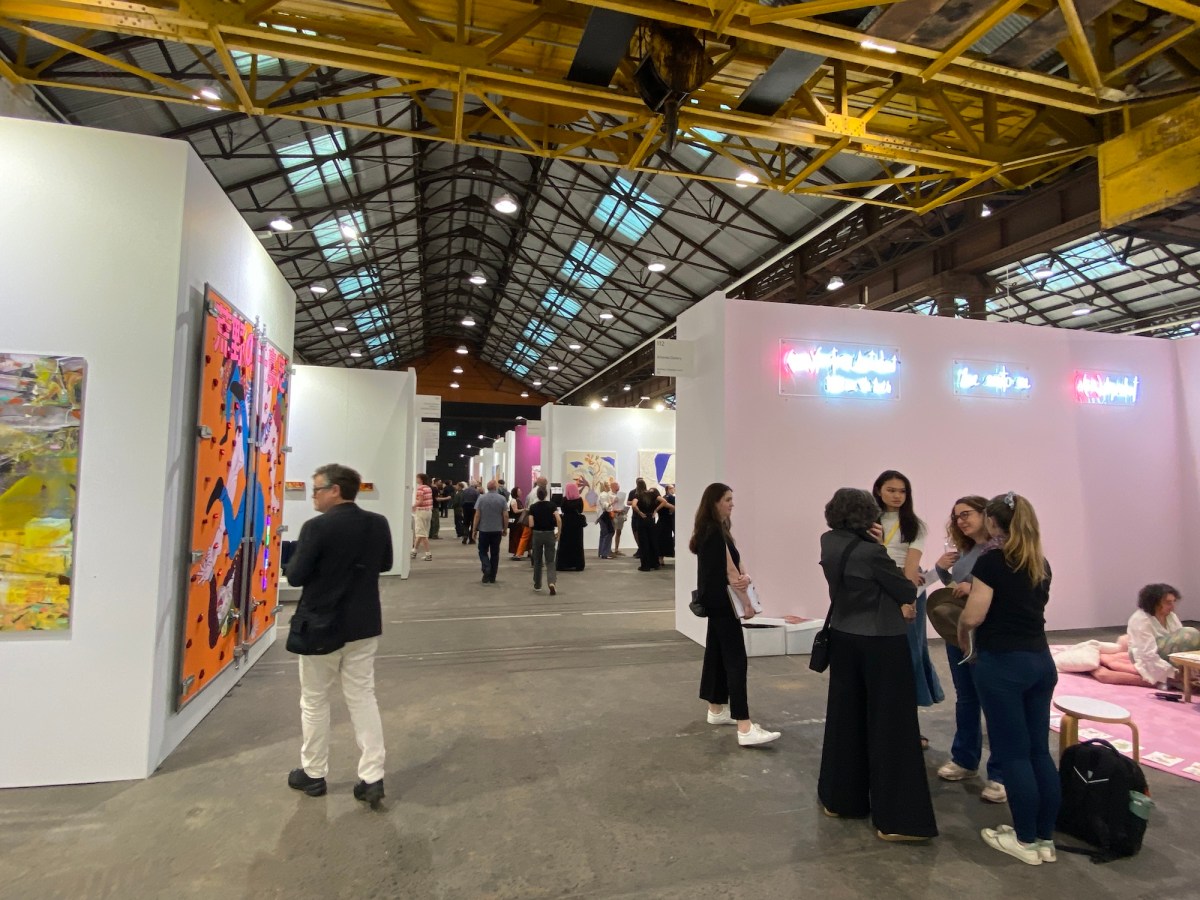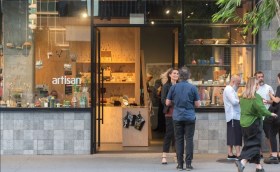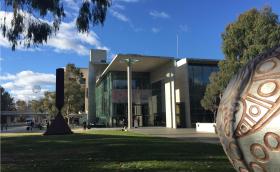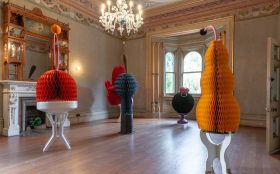I wore red – a Bavarian red Trachten Janker jacket. After all, art fairs are a circus, and I decided to play the ringmaster. Hubris, quite possibly or, more likely, an art market reality. Anyhow, the 2024 Sydney Contemporary art fair is over and, in retrospect, after the glitter has hit the ground, new or interesting art market trends were as elusive this year as introverted clowns.
The fair was creatively a bit dull, but a solid income earner for the majority of gallerists taking stands.
Understanding the art market
The art fair possibly turned over $20 million in total, though official (often stretched) figures are yet to be released. Now, let’s discuss the vagaries of turnover. The $20 million total for the art fair is made up of primary (first time-to-market) and secondary market sales. You must hold onto the age-old adage: you cannot eat turnover; you can only feast on the margin that goes to you within the overall turnover figure.
So, those galleries with primary sales turnover, do better than those dealing in secondary market trades, which are often at much higher values, but with much lower profit margins. Selling a painting for $1 million is not often as profitable for art galleries as selling a suite of primary market works totalling $250,000. The good news across the fair was that this $20 million possible turnover was largely from primary market sales.
Whatever the claimed figure, this was a good trading art fair, and that is the point.
The Australian economy, particularly in retail, has had a rough previous seven months. March saw an infamous benchmark for company and personal bankruptcies. This very sad statistic hit mums and dads, and small businesses.
No one, as such, was expecting a strong art fair. My gallery’s previous primary sales record, achieved in 2023, was improved upon by some 25% this year. Go figure.
An unexpected boon in fair sales
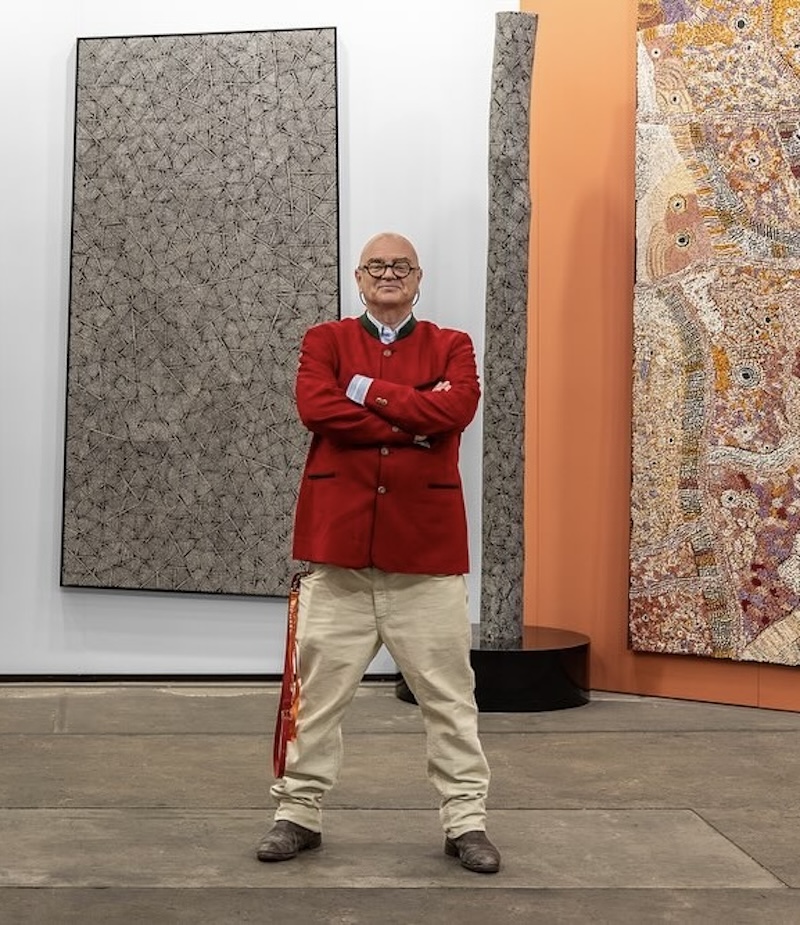
So, the first point here is that the strength of last weekend’s art fair came literally unexpectedly and largely out of nowhere. The February Melbourne Art Fair was commercially best described as “sales soft”.
Despite the overenthusiastic post-fair marketing optimism, the overall sales performance at the Melbourne fair may have left some galleries without the financial capacity to exhibit again in September at Sydney. By not attending Sydney Contemporary, these galleries did not so much save money as miss out on potential earnings – for their artists and the gallery.
August had seen green shoots of collectors returning after the non-interest rate rise from early that month. But these spending green shoots could not have foreseen the strength of the art fair. Looking across the economy, the early September Sydney Contemporary art fair bodes well, in general terms, for the recovering strength of discretionary spending in the Australian economy. Buying is still considered, but not as cautious as the first half of 2024.
This edition of the fair played it safe

A downside to the economic uncertainty heading into the fair was that, creatively, the vast majority of stands taken by art dealers were playing it safe. This risk-averse approach possibly contributed to the buoyancy of the fair’s turnover, as dealers brought proven track-record sellers.
I know my colleagues and I did. However, the downside was that there was very little at the fair that was risky or new. There are, of course, exceptions to every general rule, and the one gallery I knew of, that took a market-untested artist, bombed.
Read: 17 refresher tips on viewing art fairs
Contemporary photography accounted for between 20% and 30% of the fair’s offering, in line with that medium’s overall presence in the market. First Nations work accounted for 50% of all artworks on offer; again, this very much parallels the Australian art market.
On balance, the offerings by First Nations artists across the fair were the strongest on offer. Alcaston Gallery from Melbourne was a standout booth with a presentation by Djakangu Yunupingu. Likewise, Tim Klingender Fine Art’s secondary market sale of Emily Kame Kngwarreye’s 1995 masterwork, on display at Carriageworks for the Sydney Contemporary VIP Lounge, was the “Emily of all Emilys” to covet.
Art fairs should create trends
The fair this year was more kaleidoscopic than trend driven. As such, and playing the ringmaster at the circus, I would suggest that for Sydney Contemporary 2025, fair owner Tim Etchells should create trends, rather than respond to them. Next year, I would dedicate a hall to showcasing superior interior designers and architects, focusing on living with art.
Over the past decade, the antique and art collecting world has undergone a significant shift. Interior designers and architects have emerged as dominant client-whole-life consulting forces when buying art. This change is driven by the increasingly busy lifestyles of wealthy clients, who no longer have the time to engage in collecting themselves.
As a result, interior designers and their counterparts, those who work across many aspects of a client’s life, have gained considerable influence, becoming the primary decision-makers and even lifestyle curators for their clients.
With this innovative move, the fair would place interior designers and interior architects, along with their businesses, in front of tens of thousands of aesthetically inclined clients and potential art gallery clients. While the fair would promote the designers’ services in a business-to-business (B2B) context – a growing segment and need within this industry – it would also allow them to promote their services to private clients and professionals. Additionally, the booths would be selling the artworks, ceramics and furniture used to dress their stands.
Create an art fair trend. Just saying.

